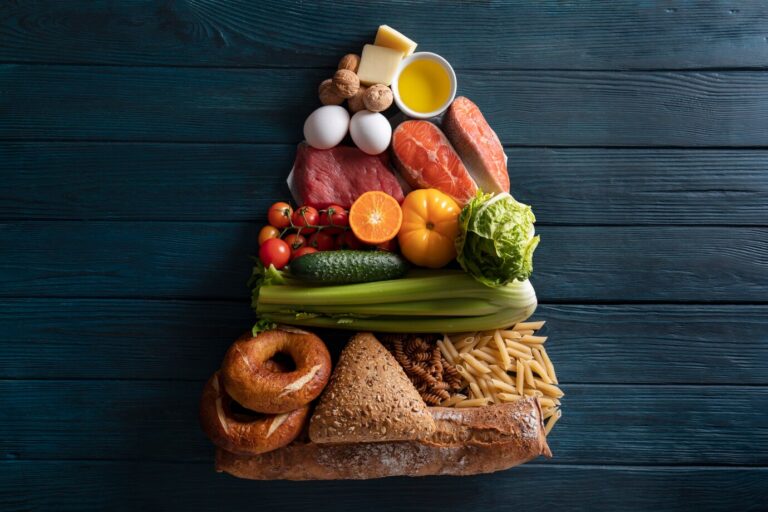
The Glycemic Index (GI) is a ranking system that measures how quickly carbohydrate-containing foods raise blood glucose (sugar) levels. It compares the effect of a specific amount of food on blood sugar to the effect of the same amount of pure glucose. The GI is especially helpful for individuals managing diabetes, aiming for weight management, or focused on improving overall health.
What is the Glycemic Index (GI)?
The concept of the Glycemic Index was introduced by Dr. David Jenkins and his colleagues in the early 1980s as a way to categorize foods based on their effects on blood glucose levels. The GI ranks foods from 0 to 100, with pure glucose being the reference point (scoring 100). Foods are ranked based on how quickly they cause blood sugar to rise after consumption.
The GI is determined by measuring the incremental blood glucose response following the consumption of a specific food, compared to a standard amount of pure glucose.
Why is the Glycemic Index Important?
Understanding and using the Glycemic Index can offer a range of health benefits:
- Blood Sugar Control: Low-GI foods help stabilize blood sugar levels, which is especially beneficial for those managing diabetes or insulin resistance.
- Weight Management: Low-GI foods can help reduce hunger and prevent overeating, supporting healthy weight management. Check you BMI with our BMI Calculator.
- Heart Health: A diet rich in low-GI foods has been shown to lower cholesterol levels and reduce the risk of cardiovascular disease.
- Sustained Energy: Low-GI foods provide a slow and steady release of energy, making them ideal for athletes and individuals who need long-lasting fuel.
Factors That Affect the GI of Foods
Several factors can influence the GI of foods:
- Processing: Highly processed foods generally have a higher GI.
- Fiber Content: Foods rich in fiber tend to have a lower GI.
- Fat and Protein: Meals containing fats or protein slow down carbohydrate absorption, lowering the GI.
- Cooking Methods: Overcooking can increase the GI of some foods.
- Acidity: Acidic foods (e.g., pickles) tend to have a lower GI.
- Ripeness: The more ripe a fruit or vegetable, the higher its GI tends to be.
Categories of Glycemic Index
Foods are classified by their Glycemic Index as low, medium, or high based on how quickly they raise blood glucose levels:
1. Low GI Foods (GI 55 or less)
These foods are absorbed slowly, leading to a gradual and steady release of glucose into the bloodstream. Common low-GI foods include:
Fruits (e.g., apples, pears)
Vegetables (e.g., leafy greens, carrots)
Beans (e.g., lentils, chickpeas)
Soy products (e.g., tofu)
2. Medium GI Foods (GI 56-69)
Medium-GI foods cause a moderate impact on blood sugar levels, providing a steady release of energy. Examples include:
Sweet corn
Bananas
Oatmeal
Sweet potatoes
Raisins
3. High GI Foods (GI 70 or more)
These foods are quickly digested and absorbed, leading to a rapid spike in blood sugar levels. High-GI foods include:
Potatoes (especially white potatoes)
White bread
White rice
Cornflakes
Instant noodles
Tips for Following a Low-GI Diet
Choose whole, unprocessed foods to lower your GI intake.
Pair carbohydrates with protein or healthy fats to help slow digestion.
Include fiber-rich vegetables in your meals for better blood sugar control.
Swap white rice for brown rice or quinoa.
Replace cornflakes with bran flakes for a more gradual blood sugar response.
Opt for whole grain bread instead of white bread.
The Benefits of a Low-GI Diet
Adopting a low-GI diet is a simple yet effective way to improve blood sugar control, manage weight, and enhance overall health. By choosing foods that have a lower glycemic index, you can enjoy stable energy levels, a reduced risk of chronic diseases, and better long-term health outcomes.
Conclusion
The Glycemic Index provides valuable insight into how foods impact your blood sugar levels. By incorporating more low-GI foods into your diet, you can improve blood sugar management, support heart health, and enjoy sustained energy throughout the day. A low-GI diet is an effective and sustainable approach to achieving better health and well-being.
References
Ostman, E., Liljeberg, H. and Bjrork, I. (2000) Low glycemic index, The British Journal of Nutrition,149-155
Sanduni Abeysinghe, MSc, BSc. Registered Nutritionist.










